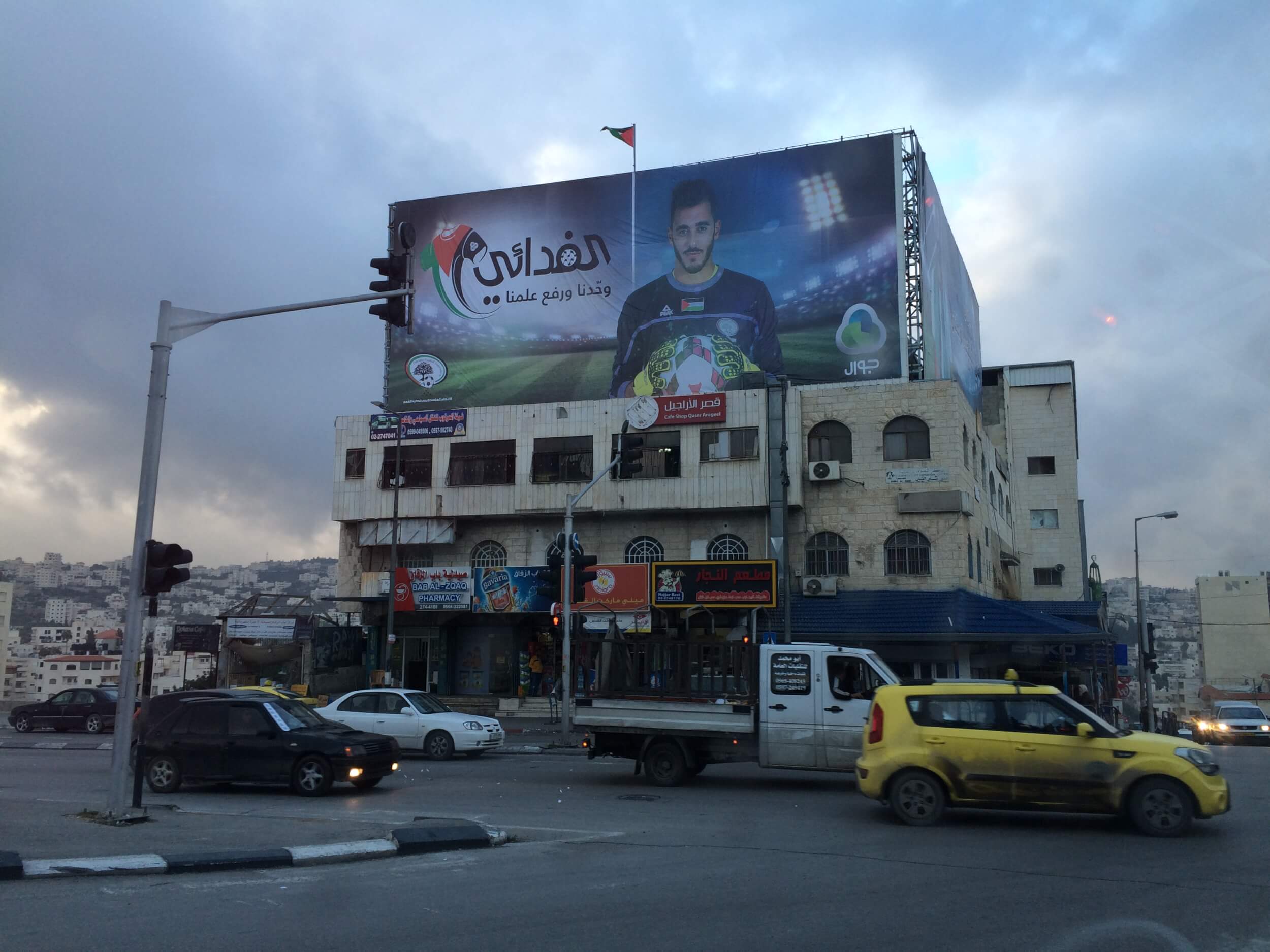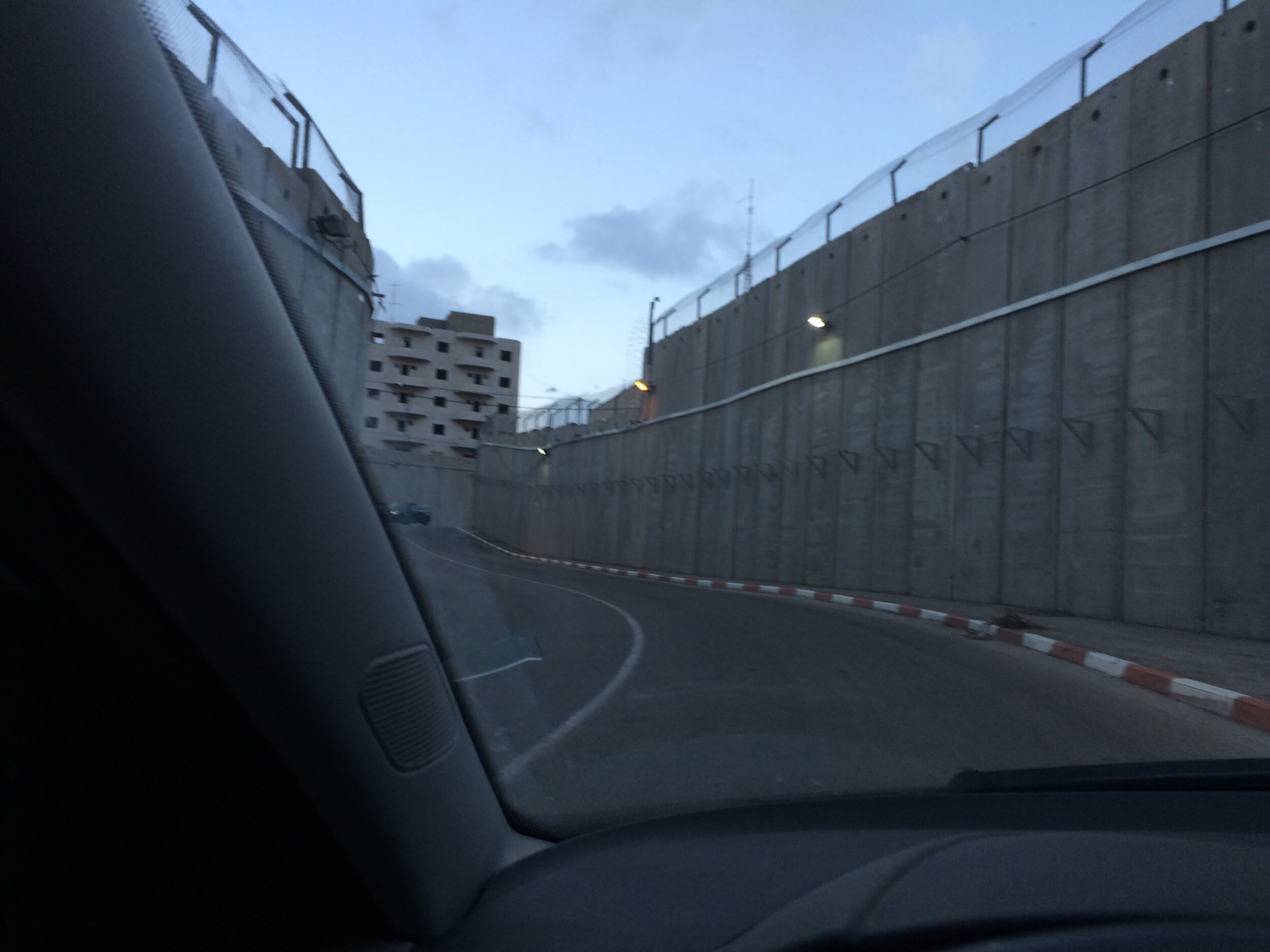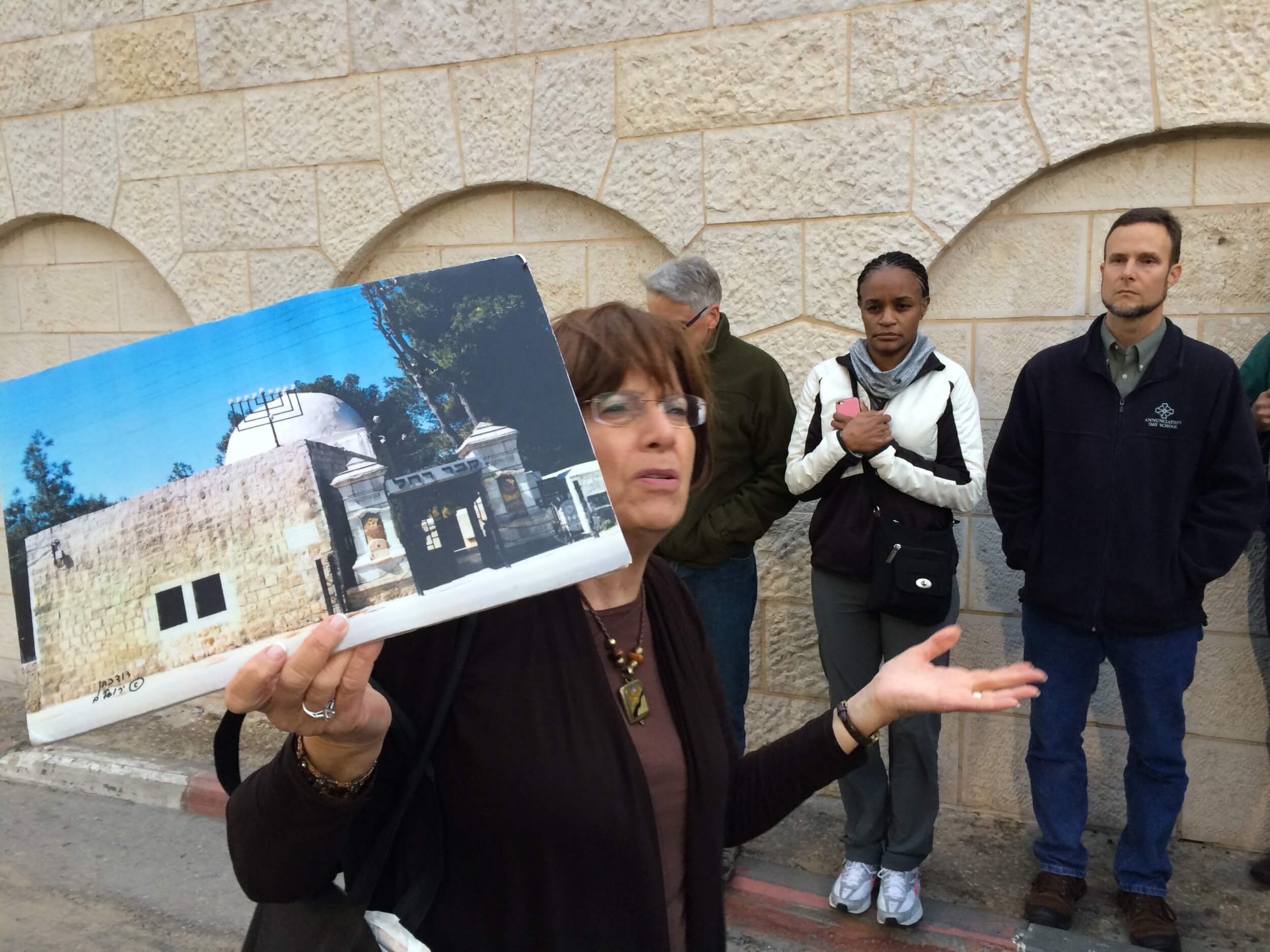I traveled again to Bethlehem (11/10/15) and unlike dozens of previous journeys this one was nerve-wracking. I traveled alone, in my car, from home to the hotel at the city center where I was set to meet a group from abroad. I heard on the radio the report on the attack on the other side of town, in Pisgat Ze’ev. I climb the beautiful road, terraces are to my left, I recognize a bright pink straw man and farmers working on the moist soil. I ride slowly, cherishing the views. Several cars angrily pile behind me. In Gilo they turn left into the fenced settlement. To my right are the first houses of Beit Jala overlooking the same views. I arrive to the junction where, to the left is the Everest restaurant and to the left the Talita Kumi school, and I try to observe whether or not there are soldiers on its other side, at the entrance to Beit Jala. There aren’t. The road is open. There is a sign warning me of committing the crime I regularly commit while entering Area A. I enter “Bethlehem University” in the GPS and I’m frustrated to recall that the particular app does not work in the Occupied Territories. It suggests that I do a U-turn and then announces its inability to recalculate a route. I insist on moving ahead.
Perhaps my memory betrays me, but I seem to see fewer cars with yellow license plates than in the past. I assume they are all Jerusalemites traveling between the city and the cities under occupation in the West Bank. Most cars have Palestinian plates and I wonder what would have happened if such a car would have found its way to Tel Aviv the same way I, an Israeli, am now in my car in Bethlehem. The city center is lively. Children and many youngsters are on the streets with their school backpacks on their way back home. I ask several people how to reach the university and assume that through my accent in Arabic they recognize the fact that I belong to the occupiers of the land. They reply, politely smiling. I am always amazed to witness how nice Palestinians are to Israeli Jews.

Bethlehem (Photo: Eitan Bronstein)
The group I meet arrived today from the USA. Most of them are here for the first time. People of different religious affiliations, interested in learning more about the conflict. I show them a video of Israeli Jews’ responding to the Nakba and the right of return. My guests are curious and attuned. Someone asks about the name Decolonizer which is direct and blunt, “How do Israelis respond to it?” I tell them that in Israeli pronunciation “the” sounds a lot like “de” and I use this confusion to point out that both meanings are relevant for me: I work against colonialism (Decolonizer) while at the same time being part of it (the colonizer). I cannot pretend to have an out. I live in this land and I am trying to influence my fellow Israelis from within.
I use the discussion to transition to the second part of the visit: a tour of Rachel’s Tomb. The monument is located in a compound which itself captures the essence of colonial logic: a small burial structure, made into a fortress surrounded by high walls creeping into Bethlehem to allow Israeli Jews access to it without having to see any Palestinians. Although the tomb is sacred for Muslim believers, too, they are not allowed in the compound.

Entering Rachel tomb. (Photo: Eitan Bronstein)
Moving through the entrance to the compound is a journey in a claustrophobic space, between walls engulfing the road. We go through a huge metal gate and in less than a minute reach a parking lot which is also surrounded by giant walls.
We get off the road and start walking towards the tomb. We immediately sense something unpleasant in the air. Yes, it is tear gas. Armed soldiers go in and out through the gaps in the wall to shoot the chemical substance on Palestinians. They must be crying over there and we certainly are crying over here with Rachel over her spartan children and the gas.
Aviva who guides us is involved with the women’s group that lobbied to erect this otherworldly place. She speaks enthusiastically and with faith about what Rachel’s kindness symbolizes. I ask her how this fits with the walls and the shooting around and she explains that the Arabs around are hostile and always attempt to hurt Jews. She tells about the wedding dress of a young Israeli bride that became a relic of the compound after she was killed in an attack on her wedding day. As far as she is concerned, the bride’s soul is bound with Rachel’s, who might not even actually be buried here, she admits. She goes on, showing a picture of the tomb from its more modest past as the shooting around us continues.

Aviva and the photo. (Photo: Eitan Bronstein)
We stand in the cold, we hear the bangs of the stunt grenades and inhale some of the gas. “But don’t worry, if the military feels your security is at stake they will immediately instruct us to go into the complex which is sealed and protected”, she makes an effort to ease the anxiety. Aviva thanks the Americans for coming to Israel during these rough times because any show of support in these days is highly significant. Welcome to the Holy Land.
I shudder hearing her remarks and I’m not sure what to think of myself standing there. A fucking occupier standing with this orthodox lady at Rachel’s Tomb, asking to reveal the truth and change from within. Perhaps Rachel’s Tomb is too much of an in? I think about my friends on the other side of the wall, at Aida refugee camp, who were deported by Israel in 1948 from villages surrounding Bet-Shemesh. I can’t find an easy answer to this paradox. I’m angry at us, at myself, and I’m dying to get the hell out of there.
Translation to English by Amit Gilutz.
Source Article from http://mondoweiss.net/2015/11/nervesgas-rachels-tomb
 RSS Feed
RSS Feed















 November 19th, 2015
November 19th, 2015  Awake Goy
Awake Goy  Posted in
Posted in  Tags:
Tags: 













